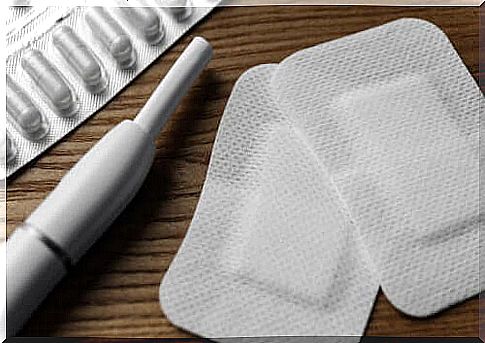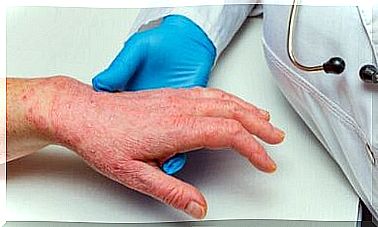Nicotine Replacement Therapy: What It Consists Of

Nicotine replacement therapy is a treatment for smoking. This treatment provides the body with nicotine in the form of chewing gum, patches, sprays or pills to suck. The different therapeutic options, even if they provide nicotine, offer the advantage of avoiding the chemicals present in cigarettes and their combustion, which are definitely harmful to health.
What is nicotine replacement therapy?
Substitution therapy can help you cope with the withdrawal symptoms and cravings you feel when you stop using tobacco. Generally, smokers need several attempts before they can finally quit smoking.
Most smokers relapse into the habit within the first month, mainly due to the symptoms they experience as a result of nicotine withdrawal syndrome. Substitution therapy only deals with aspects concerning physical dependence; consequently, in order to overcome psychological dependence, it is likely that other strategies will also need to be used.
Studies on substitution therapy reveal that when this nicotine substitution therapy is used in combination with counseling, the chances of being able to quit smoking are far greater.

Types of nicotine replacement therapy
The Food and Drug Administration has approved several therapeutic modalities useful for quitting the habit of smoking.
1. Patches
It is a method of administering nicotine through the skin, capable of providing each person with an adequate dose of nicotine. Over time, patches containing doses in decreasing quantities are used: at the same time, nicotine dependence also decreases.
- 16 hours : these are suitable for people who smoke little. However, it must be taken into account that during the night they do not provide nicotine: the treatment will therefore be ineffective if withdrawal symptoms occur early in the morning.
- 24 hours : using these patches, the nicotine supply is constant and it is therefore possible to avoid withdrawal symptoms.
The patches should be changed every day, in the morning, sticking them on a clean and dry area of the skin. Among the possible side effects of nicotine patches, we find skin irritation, nausea, seasickness, headache or difficulty sleeping.
2. Chewing gum

With nicotine chewing gum, absorption occurs through the oral mucosa. They are available in concentrations of 2 mg and 4 mg and should be chewed slowly, until you can taste them.
Then you have to hold them on one side of the cheeks, until you have stopped perceiving the taste. Then the process is repeated by switching sides of the mouth: the chewing process must be repeated for an hour.
Since nicotine is absorbed through the oral mucosa, food and drink can interfere with its absorption. For this reason, it is best to avoid drinking and eating for at least a quarter of an hour before starting to chew the gum.
It is advisable not to consume more than 24 gums a day or to prolong the treatment beyond six months. The ideal is to use these tires for a period of between two and four months. As possible side effects, among many, it is possible to perceive a bad taste in the mouth or an irritation in the throat.
3. Nicotine replacement therapy: nasal spray
Nicotine spray is a treatment that allows nicotine to reach the blood quickly, because it is absorbed by the nasal mucosa. It is useful for quickly relieving the symptoms of withdrawal syndrome, helping to control the desire to smoke.
The FDA recommends its use for a period of three months and no more than six. The most common side effects of using the nasal spray include throat and nose irritation. After a couple of weeks of stopping its use, these effects disappear.
4. Nicotine tablets
Nicotine tablets are available in two different strengths to satisfy every smoker’s need for nicotine. The concentration can be 2 or 4 mg, and smokers can choose the one that best meets their needs. Normally it is recommended to suck one tablet every one or two hours for a month and a half; then it goes to one every 2 or 4 hours for almost two months and, finally, one every 4 or 8 hours for three months.
Just as in the case of chewing gum, nicotine tablets are absorbed by the oral mucosa and, therefore, it is best not to eat or drink anything for at least a quarter of an hour before sucking one, or while you are doing it. The tablet must be sucked until it has completely dissolved, in about half an hour.
Conclusion
There is no one type of nicotine replacement therapy that is better than another. Simply, you have to choose the one that best suits your lifestyle and way of smoking.









